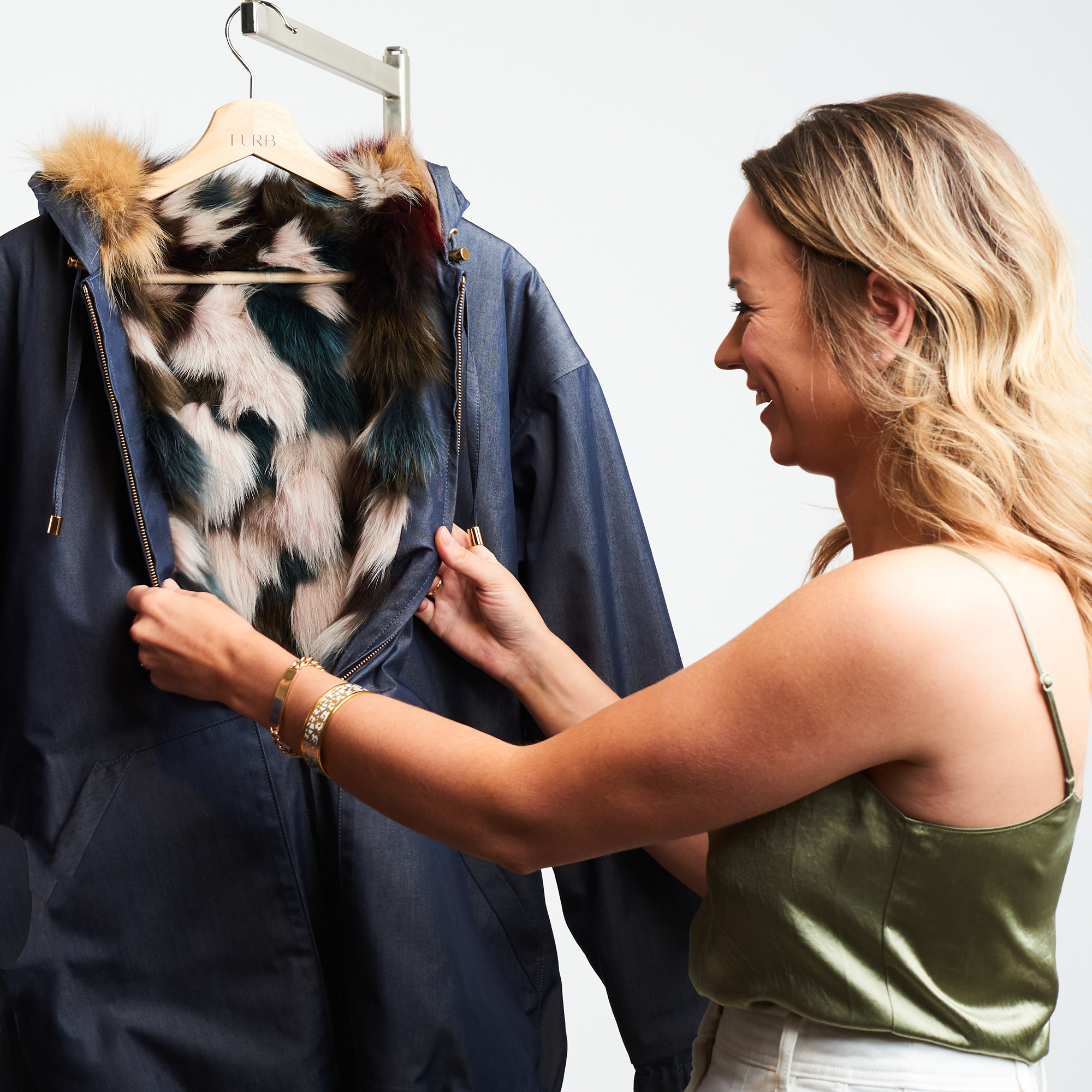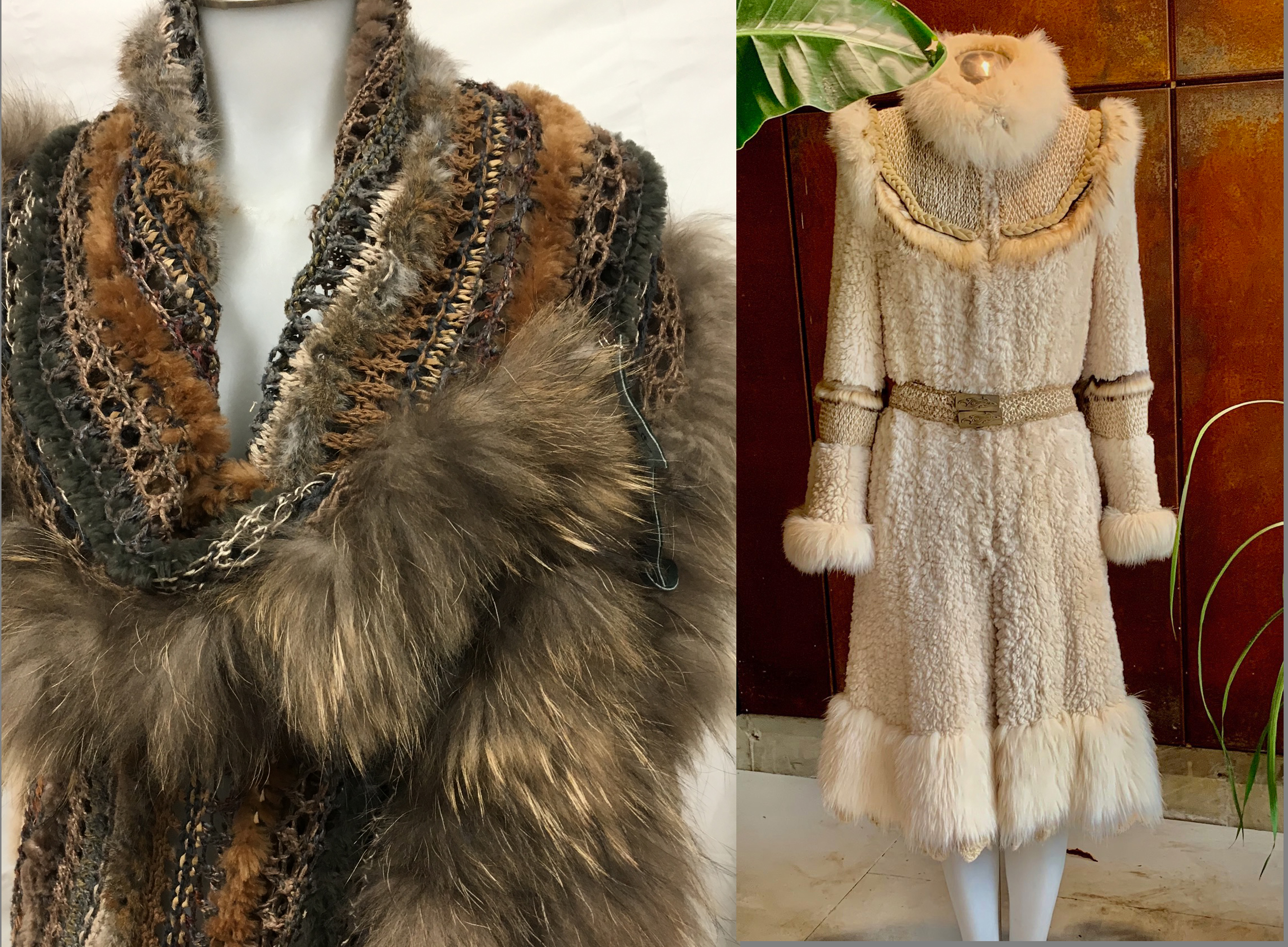Designing with Fur

Photo: Christina Nacos
Fur has many unique qualities that make it a favourite with designers. Aside from the obvious function of keeping us warm, different fur types have their own textures, hair lengths, and stunning natural colours (while also looking great dyed). Fur is also incredibly versatile, not least because, unlike fabrics, it’s three-dimensional. Other superlatives often used for fur include soft but durable, luxurious, chic and sexy.
Fur designers are also proud of what they do. Their garments are hand-made, using artisanal skills passed down and perfected over many generations. And they are helping the planet. Unlike petrochemical synthetics used for most “fast fashion” today, fur is organic, renewable and therefore sustainable, and, at the end of its long life, biodegradable.
These are also exciting times for working with fur, for two main reasons.
First, the consumer base for fur has broadened greatly in recent decades, which means designers now cater to a far wider range of fashion tastes.
And second, technical advances in the ways fur is processed mean designers are freer than ever to express themselves.
EXPANDING CONSUMER BASE
Through the 1950s, fur styles were quite limited, in part because the consumer base was also limited. In recent decades, though, furs have been embraced by a much broader spectrum of society, providing fresh opportunities for designers to be creative.
Fur has been democratised
Historically, all fur was wild, not farmed, which meant supplies were unreliable and often had to be shipped over vast distances. That made premium furs, from far-flung places like Siberia and northern Canada, very expensive in the cities where most were consumed. So the market for fur designers was mainly limited to the wealthy few.
But that’s all changed, in large part thanks to the rise of fur farming in the 20th century. Premium furs like mink, fox and chinchilla are still not cheap, but they’re affordable for far more consumers than ever before.
Fur pieces have shrunk
Fur has also become more affordable because the average size of fur pieces is smaller.
Until the 1950s, full-length fur coats were a status symbol for many women. They were not only luxurious and eye-catching, they were also expensive – as any good status symbol should be!
Today’s fashion scene has changed, though. You can still spend a bomb on a full-length chinchilla or sable coat if you want, but smaller jackets have taken over, along with fur vests, ponchos and shawls. There is also an abundance of smaller pieces (or “entry level” pieces, as marketers call them), like fur-trimmed cuffs and hoods, boots, handbags, belts, ear muffs and jewellery. It’s also common now to find home furnishings made of fur, like throws, blankets and cushion covers.
Changing lifestyles
Yet another factor behind an expanded consumer base for fur has been our changing lifestyles. Formal attire was once expected at all functions, and a lot of events that we take for granted today were treated with pomp. Full-length furs were a common sight on commercial flights, on shopping trips to luxury stores, and even on dates to the cinema. Now we dress far more casually and comfortably. In the last two decades we’ve also become more health-conscious, and sporty wear has become daily attire for many of us. So expect to see plenty of fur-trimmed parkas on the hiking trail, and furry ear muffs on the piste.
EVOLVING TECHNIQUES
The other game-changer for designers has been huge advances in processing techniques that make fur even more versatile.
In the past, furs tended to be bulky, and instantly recognisable. Now they can be made thinner, lighter and more flexible, which means designs can be more body-hugging. And with transformations like dyeing and adding textures, a layman may not even know that you’re wearing fur.
Here are just a few of the many techniques that are allowing designers to be more creative than ever before. (For more information see Processing Fur.)
Intarsia
Adapted from the ancient wood-inlaying technique, intarsia with fur involves cutting a pattern out of one pelt and sewing it into the space left in another pelt where the same pattern has been cut. If, for example, a pattern from a silver fox pelt is sewn into a red fox garment, the result can be spectacular.
Mixed media
It’s always been common to combine fur with leather or other heavy, weather-resistant fabrics, typically as collars, cuffs and linings. Now designers are taking this to the next level, combining fur with a whole range of exotic materials. See the spectacular hand-knit big circle shawl below left, which combines beaver, mink, squirrel, leather, cotton, silk, and Finn raccoon trim on the collar.

Photos: Paula Lishman
Knitting
In 1979, Ontario designer Paula Lishman patented a unique process for making fur yarn that could be knit into washable garments with fur inside and out. Lishman’s favourite raw material for yarn is beaver that’s been hand-plucked and sheared, with other furs being used as trims. Pelts are often dyed so that the leather is the same colour as the hair. Each pelt is then hand-cut into one continuous strip, which is then transformed into a strong yarn with very few sewing joins.
The main coat above right is made of sheared beaver woven into a knit fabric of cotton, silk and cashmere threads worked together, and fox hems. The yoke is woven cowhide with cotton, edged with braided lamb leather piping. A narrow strip of seal holds the badger fur down flat against the body. The hem is a pelt of sheared beaver cut in waves and stitched under the fox to show like a petticoat. The belt is woven leather.
